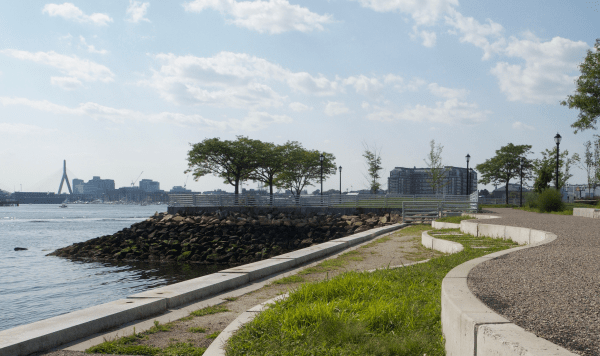Understanding its composition and production can clarify its effects. The compounds xanthohumol and myrcenol in hops, a key ingredient in non-alcoholic beer, have a sedative effect and are thought to improve sleep patterns. Studies have shown that drinking non-alcoholic beer in the evening can help individuals fall asleep faster and experience less restlessness during the night, promoting better sleep quality. Non-alcoholic beer is believed to have beneficial effects on cardiovascular health due to its polyphenol content, particularly polyphenol xanthohumol, derived from hops. Unlike alcoholic beer, which has a diuretic effect and can lead to dehydration, non-alcoholic beer has been found to have better rehydration properties.
Physical health
Yes, non-alcoholic beer isn’t the only drink out there that can be considered “non-alcoholic” by the TTB but still contain trace amounts of alcohol. Basically, alcohol is a byproduct of the fermentation process that makes these kind of drinks possible. This perceived intoxication can lead to behavioral changes similar to those observed with alcohol consumption.

Comparison with water and sports drinks
This discrepancy can be particularly dangerous for individuals in recovery, as even trace amounts of alcohol can disrupt their sobriety. Navigating the world of non-alcoholic beer can be a personal journey for anyone in recovery. It’s essential to weigh the benefits against the potential risks and listen to your own feelings and experiences. While some might argue that it allows them to participate in social situations, the potential for triggering cravings and relapse far outweighs any perceived benefits.
- Similarly, you might one day need to attend some other important social event such as a wedding or high school reunion.
- Some individuals may successfully incorporate NAB into their lives without negative consequences, while others may find that it hinders their recovery.
- Once you complete an alcohol rehab program, you might need extra support to reacclimate to everyday life.
- Our team of specialists helps individuals navigate the recovery process and stay motivated.
- These drinks are generally made from only four natural ingredients – water, yeast, malt, and hops – with barely any preservatives or added sugars.
Addiction Recovery Blog
At gatherings, you can enjoy a beverage that mimics traditional beer’s taste and experience. Many find it helpful to hold a drink, as it alleviates pressure in social settings. If you’re dined with friends at a restaurant or attending a barbecue, opting for non-alcoholic beer maintains a sense of participation. Brands like Heineken and Clausthaler going back to drinking after being sober provide various flavor options, enhancing your ability to blend in without alcohol. However, other professionals caution that even minimal alcohol can trigger cravings.

The Danger of a Trigger
- Let’s explore both the benefits and dangers of non-alcoholic beer in recovery, and try to get an objective view on the matter.
- After asking yourself these questions, you should have a good idea of whether drinking NA beer is right for you.
- For some people, the idea of never drinking alcohol again can be so depressing that they don’t even try to quit.
- Addiction specialists, therapists, and counselors can provide tailored advice and help individuals in recovery explore the potential effects of consuming non-alcoholic beer on their sobriety.
- People seek alternatives to traditional beer for various reasons.
Alcohol and Tobacco Tax and Trade Bureau (TTB), beverages labeled as “non-alcoholic” must contain less than 0.5% alcohol by volume (ABV). This threshold allows for the production and consumption of beverages that have undergone fermentation but have had the majority of their alcohol content removed or reduced to very low levels. This 0.5% ABV cap is a general standard in the U.S. and is also recognized in various other jurisdictions, making it a widely accepted definition for non-alcoholic beer and other beverages.
Psychological effects on alcohol-free lifestyles
- Consulting treatment providers or care teams can provide personalized advice and support.
- Non-alcoholic beer (NA beer) is generally considered safe for many in recovery due to its low alcohol content (less than 0.5% ABV).
- A support network can help you feel less isolated, provide emotional and practical help, hold you to account and help you work on coping mechanisms.
- I sent out a survey on social media to find out how other people who are limiting their alcohol intake in some way talk about recovery and received 19 responses.
- The compounds xanthohumol and myrcenol in hops, a key ingredient in non-alcoholic beer, have a sedative effect and are thought to improve sleep patterns.
It’s like momentarily losing your footing but catching yourself before you fall. So by that definition, one drink isn’t necessarily a relapse, but it’s not exactly a reason to celebrate, either. Any time you drink https://www.reservemarketnow.com/cannabinoid-hyperemesis-syndrome/ after a period of abstinence, you are choosing to sit down at the top of a slippery slope. We are a top-rated transitional living residence for men and women to recover safely that offers co-ed and men’s Oakland Park, FL sober living homes.

Just being in places where non-alcholic beer is available—a bar, a restaurant, or a party at a friend’s house, for example—may put you in situations you shouldn’t be in post-recovery. Even if you order the non-alcoholic beer option, being around people who are drinking alcoholic beverages may tempt you to join them, derailing your sobriety and causing alcohol relapse. It is crucial for individuals in AA to be aware of their triggers and have effective strategies to deal with them.
How to Manage Alcohol Cravings
Treatment plans often incorporate cognitive-behavioral techniques and other therapeutic methods designed to help individuals identify and manage their specific triggers. Addiction treatment professionals may advise some clients to avoid non-alcoholic beer entirely, especially early in recovery, as part of developing a solid foundation for sobriety. In this article, we will dive into whether non-alcoholic beer can impact your sobriety, its psychological and physical implications, and what experts and recovering individuals have to say. In conclusion, non-alcoholic beer can be a valuable alternative for people looking to moderate their alcohol intake. It offers an opportunity to enjoy the taste and social experience of beer without intoxication.
Of the zero-alcohol beers sampled, six were found to have alcohol levels higher than one percent. While this process removes most alcohol, some small amounts may remain. For example, where a regular beer contains approximately 14 grams of alcohol, a non-alcohol beer typically contains approximately one gram of alcohol. The reason I don’t bother is that it doesn’t help marijuana addiction me in my recovery process. Are you drinking it to blend in, or because it helps you avoid hard conversations?
